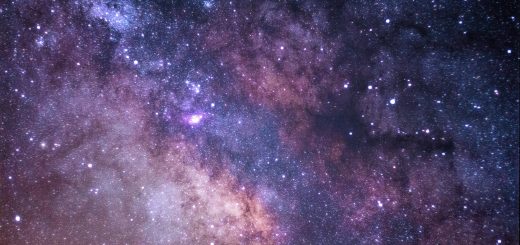The Enigma of the Nazca Lines: Art or Message?

Before diving in, please note: This post is for informational purposes only. If you’d like to know more about how we approach topics, feel free to check out our friendly Disclaimer Page.
Hey there, amazing readers! 🖐️ Just a quick note: yes, we know there are a lot of ads here. Trust us, we get it—it’s not the prettiest look, but they help us keep this blog alive and kicking. Those pesky little ads cover the costs of all the behind-the-scenes magic, from hosting and tech stuff to creating content we hope you’ll love.
We’re committed to delivering quality posts, and your support (even just sticking around despite the ads) means everything to us. So, bear with us, and thanks for helping us keep the good vibes rolling. Now, on to the fun stuff! 😉
TRANSLATE BUTTON AT THE END OF THE ARTICLE
A Quick Overview
The Nazca Lines, a collection of massive geoglyphs etched into the arid desert of southern Peru, have baffled researchers, historians, and tourists alike for decades.
These ancient markings, which depict various animals, plants, and geometric shapes, raise fascinating questions: What was their purpose?
Were they simply artistic expressions of the Nazca civilization or messages meant to convey deeper meanings?
As I dive into the enigma of the Nazca Lines, I’m excited to explore the history, theories, and cultural significance surrounding these remarkable creations.
Unraveling the Mystery: What Are the Nazca Lines?
The Nazca Lines cover an impressive area of about 1,000 square kilometers.
They are often best viewed from the air, where their true scale and design come into focus.
The lines consist of shallow grooves scraped into the earth’s surface, exposing the lighter soil beneath.
You’ll find everything from simple lines to complex figures, including the famous hummingbird, spider, and monkey.
Most of these geoglyphs date back to between 500 BCE and 500 CE, which places them squarely in the Nazca culture’s heyday.
Some of these figures stretch across vast distances, measuring hundreds of meters.
Imagine standing on the ground and trying to comprehend the enormity of these designs!
It’s mind-boggling to think about how the Nazcas managed such precision without modern technology.
The lines are made by removing the top layer of dark stones, exposing the lighter ground beneath.
This simple technique reveals a stark contrast, making the designs visible even from a distance.
Over the centuries, the desert climate has preserved these lines incredibly well.
It’s almost as if time stood still, allowing us to catch a glimpse of the past.
Understanding the Nazca Lines is all about perspective.
They might look like random scratches from the ground, but from above, they morph into intricate artwork.
So, the next time you hear about the Nazca Lines, remember: it’s not just a bunch of lines in the desert; it’s a canvas that speaks volumes about the people who created them.
A Glimpse into History: The Nazca Culture Explained
To appreciate the Nazca Lines, we need to step back and look at the Nazca civilization itself.
The Nazca people thrived in this region from around 200 BCE to 600 CE.
They were skilled artisans, and their society was rich in culture and innovation.
They developed advanced agricultural techniques, including an intricate system of aqueducts that allowed them to cultivate crops in a challenging desert environment.
The Nazca culture is renowned for its pottery, textiles, and, of course, the geoglyphs.
Artistry was at the heart of their civilization.
Their pottery is often decorated with vivid colors and intricate designs.
Similarly, their textiles were colorful and sophisticated, showcasing their artistic talents.
Religion played a vital role in Nazca life.
They practiced a form of animism, believing that natural elements had spirits.
This might explain why many of the geoglyphs depict animals and plants.
Perhaps they were honoring these spirits or seeking their favor.
The Nazcas also engaged in elaborate rituals, which possibly involved the geoglyphs.
Some researchers propose that the lines were part of religious ceremonies, serving as pathways for the worship or offerings to deities.
This connection to spirituality adds another layer of depth to our understanding of the Nazca Lines.
In my view, the Nazca Lines are not just relics of the past but a window into the vibrant life of an ancient culture.
They remind us that humanity has always sought to express creativity and connect with the world around them.
Exploring the Shapes: What Do the Lines Represent?
The Nazca Lines are best known for their variety of designs.
Some shapes are relatively simple, while others are intricate and detailed.
Among the most famous figures are the hummingbird, the monkey, and the condor.
Each of these shapes is unique and serves a purpose, though the exact meanings remain elusive.
Let’s talk about the hummingbird, for instance.
This creature is often associated with fertility and the divine.
Its presence in the Nazca Lines could represent a connection to life and nature.
The monkey, with its playful demeanor, might symbolize joy and vitality.
Meanwhile, the condor often embodies power and freedom, soaring high above the landscape.
Some lines are geometric, like triangles and spirals, while others depict animals and plants.
The variety is astounding.
Many researchers believe that these shapes might be connected to astronomical events or natural phenomena.
For example, the alignment of certain geoglyphs with the sun’s position during solstices sparks curiosity about potential astronomical significance.
There’s also the possibility that the shapes were maps, guiding travelers or marking important locations.
Others suggest they could be markers for water sources or agricultural zones.
Each hypothesis offers a fascinating glimpse into how the Nazcas interacted with their environment and how they perceived the world.
When gazing upon these lines, it’s easy to get lost in interpretation.
Are they simple artistic expressions, or do they hold deeper meanings?
I find that mystery captivating.
It invites us to wonder, to explore, and to appreciate the creativity of the Nazca civilization.
Theories Abound: Are They Art or Ancient Messages?
The debate over whether the Nazca Lines are art or messages has captivated historians and archaeologists.
Some scholars argue they are purely artistic expressions.
They view the lines as a canvas for creativity, showcasing the Nazca’s artistic abilities.
On the other hand, many researchers assert they are messages.
This view holds that the lines and shapes served a purpose beyond aesthetics.
They might have communicated important cultural, religious, or astronomical information.
One idea is that they were created as part of rituals, perhaps to summon rain or honor the gods.
Another theory posits that the geoglyphs functioned as markers for travelers or paths of pilgrimage.
Some believe they represent a connection to the cosmos, an ancient form of astronomy that allowed the Nazca people to track celestial events.
In my opinion, the lines could be a blend of both art and messages.
The intricacy and scale suggest an artistic expression, while their potential connections to spirituality and astronomy indicate deeper meanings.
Maybe the Nazca Lines were a way for the Nazca people to communicate with their gods or fellow villagers.
The beauty of these theories is that they reflect our attempt to understand a culture vastly different from our own.
Whether art or message, the Nazca Lines certainly evoke a sense of wonder and curiosity.
They invite us to ponder the past and the creativity inherent in humanity.
The Astronomical Connection: Lines and Celestial Bodies
One of the most intriguing aspects of the Nazca Lines is their potential connection to astronomy.
Many researchers have observed alignments between certain lines and celestial bodies, particularly the sun, moon, and stars.
This raises the question: were the Nazca people using these geoglyphs as astronomical guides?
Some lines appear to point directly toward the sunrise or sunset during solstices.
This could indicate that the Nazcas had an understanding of celestial events and built the lines accordingly.
Imagine them gathering at these sites to celebrate astronomical events, marking the passage of time through their creations.
Additionally, some researchers have suggested that the designs may serve as a cosmic calendar, tracking seasonal changes and agricultural cycles.
The synchronicity between the geoglyphs and celestial movements could suggest that the Nazcas had a sophisticated understanding of their environment.
While some might reject these theories as mere coincidences, the compelling evidence encourages exploration.
I often think back to how ancient civilizations relied heavily on the stars for navigation and agricultural planning.
It’s quite possible that the Nazca Lines were part of a larger system of understanding their world.
Whether these lines served practical purposes or were merely artistic remains a mystery.
Still, the intersection of art and science in ancient cultures fascinates me.
It’s a reminder that human beings have always sought to connect with the universe around them.
The Role of Geoglyphs in Nazca Society and Rituals
The Nazca Lines likely played an important role in the society and rituals of the Nazca people.
Much of their life revolved around agriculture and the cycle of nature, so it’s plausible that the geoglyphs were tied to seasonal festivals or agricultural rites.
Imagine a bustling community preparing for a harvest celebration, using the lines as focal points for their rituals.
They may have gathered at specific geoglyphs to offer thanks to their deities for bountiful crops or to pray for rain.
The lines might have served as sacred grounds where ancient ceremonies unfolded.
Some researchers suggest that the large-scale designs could have been a way to attract attention from the heavens, almost like a message sent skyward.
It’s fascinating to consider how these ancient people might have viewed their surroundings.
They likely believed that the spirits of nature and their ancestors were watching over them.
Furthermore, the Nazca Lines could have fostered a sense of community among the Nazca people.
Imagine this: locals gathering to maintain the lines, sharing stories, and creating bonds.
There’s something incredibly human about coming together to work on a shared project that holds cultural significance.
In my view, the Nazca Lines are more than just designs on the ground; they are a testament to the values and beliefs of an ancient civilization.
They remind us that art can serve as a medium for connection, both with the earth and with each other.
Ancient Aliens or Earthly Artistry? A Fun Debate!
When it comes to the Nazca Lines, the debate about their origins can get quite wild.
One of the more colorful theories suggests that extraterrestrial beings were involved in their creation.
Proponents of this idea argue that the sheer scale and precision of the geoglyphs could only be achieved with advanced technology not available to the Nazca people.
While it’s tempting to entertain the notion of ancient aliens, most archaeologists support the idea that the Nazca Lines were created by the people of the region using techniques available to them at the time.
The Nazcas were skilled artisans who wielded knowledge of geometry and astronomy.
They were perfectly capable of creating these impressive designs without assistance from outer space.
Of course, the alien theory makes for a fun conversation starter!
Who wouldn’t enjoy discussing the possibility of UFOs zipping over the desert?
It adds a layer of intrigue to the Nazca Lines that captures the imagination.
However, I think it’s essential to appreciate the artistry and ingenuity of the Nazca people.
They crafted these lines with purpose and meaning, showcasing their creativity and understanding of the world around them.
Celebrating their achievements feels much more satisfying than attributing it to aliens.
So, whether you’re a believer in extraterrestrial involvement or a staunch supporter of human ingenuity, the Nazca Lines offer endless fodder for debate.
And who doesn’t love a good discussion about ancient mysteries?
Preservation Efforts: Protecting the Nazca Lines Today
As I ponder the significance of the Nazca Lines, I can’t help but consider their preservation.
These ancient geoglyphs are vulnerable to natural and human-made threats.
Wind erosion, climate change, and even tourism can impact their integrity.
Fortunately, several organizations and local governments have recognized the importance of protecting these lines.
Efforts are underway to monitor and preserve them for future generations.
This includes establishing protective measures to limit access and manage the impact of tourism.
It’s encouraging to see communities working together to safeguard their cultural heritage.
Some innovative approaches involve using technology.
For instance, drone surveys help researchers monitor changes in the landscape.
These advancements allow for a better understanding of the lines while ensuring they remain intact.
More importantly, public awareness campaigns encourage respect for the Nazca Lines.
It’s crucial for visitors to understand the significance and fragility of these geoglyphs.
In doing so, we can all contribute to their preservation, allowing future generations to marvel at their beauty.
Whenever I think about the Nazca Lines, I feel a sense of responsibility.
They embody a remarkable chapter in human history, and preserving them is vital.
It’s a way to honor the creativity and ingenuity of the Nazca civilization.
Viewing from Above: The Importance of Aerial Perspectives
You may have heard the saying, “the best view comes after the hardest climb.” Well, with the Nazca Lines, you don’t need to climb mountains to appreciate their true beauty!
The lines are best viewed from above, providing a stunning perspective that reveals their full scale.
Aerial tours have become popular among tourists eager to witness the geoglyphs firsthand.
From an airplane or a helicopter, you can see the intricate details and appreciate how the designs fit into the vast desert landscape.
It truly is a sight to behold!
Seeing the Nazca Lines from above provides insights that are simply not possible from the ground.
The grandeur of these creations is hard to grasp until you’re floating above them.
It’s like catching a glimpse of a magical land that only a few have the privilege to see.
Moreover, aerial perspectives allow researchers to analyze the lines more effectively.
They can identify previously unnoticed features and patterns, contributing to our understanding of their purpose.
It’s like turning the pages of a history book that keeps revealing new stories.
In my own experience, taking to the skies to view these lines was an unforgettable adventure.
The sheer beauty and scale of the geoglyphs left me in awe.
If you ever get the chance to see them from above, seize it!
You won’t regret it.
The Nazca Lines in Popular Culture: Impact and Inspiration
The Nazca Lines have made their mark not just in archaeology but also in popular culture.
They’ve inspired artists, writers, and filmmakers, serving as a symbol of mystery and creativity.
Their allure captures the imagination, leading to countless references in literature, movies, and even video games.
Many artists have drawn inspiration from the lines, incorporating their shapes and patterns into modern art.
The lines represent the intersection of ancient and contemporary creativity, bridging the gap between past and present.
It’s fascinating to see how these ancient designs continue to influence today’s artistic expressions.
Documentaries exploring the Nazca Lines have also gained popularity, captivating audiences with their mysterious origins and theories.
These films invite viewers on a journey of discovery, prompting them to contemplate the significance of the geoglyphs.
They serve as a reminder that history is alive and relevant.
Even the alien theories have found their way into popular culture.
They’ve sparked a plethora of discussions, becoming a part of the global dialogue about ancient civilizations.
Whether it’s a light-hearted exploration of extraterrestrial involvement or a serious look at historical context, the Nazca Lines invite curiosity.
As I reflect on the Nazca Lines’ impact, I’m struck by their ability to transcend time and influence modern culture.
They remind us that the past is never truly gone; it lives on through our stories, art, and collective imagination.
Visiting the Lines: Tips for Aspiring Explorers
If you’re considering a trip to see the Nazca Lines, you’re in for a treat!
However, a little preparation can go a long way in making your experience memorable.
Here are some tips to keep in mind:
Choose the Right Time: The best time to visit is during the dry season, from May to September.
This ensures clear skies, providing optimal viewing conditions.
Take an Aerial Tour: For an unparalleled experience, opt for an aerial tour.
You’ll get a bird’s-eye view of the lines, allowing you to appreciate their grandeur fully.
Stay Hydrated: The desert climate can be surprising.
Drink plenty of water to stay hydrated, especially if you explore on foot.
Respect the Site: Remember that the Nazca Lines are a cultural treasure.
Stay on designated paths and avoid walking on the geoglyphs to help preserve them.
Bring a Camera: Capture the moment!
The views are breathtaking, and you’ll want to remember your experience.
Learn About the Lines: Before your visit, do a bit of research.
Understanding the history and theories behind the Nazca Lines will enrich your experience.
Engage with Locals: Don’t hesitate to ask locals about the lines.
They often have stories and insights that can enhance your understanding.
With a little planning and curiosity, your visit to the Nazca Lines will be an unforgettable adventure.
You’ll not only witness a remarkable feat of human creativity but also connect with the ancient culture that created it.
The Lasting Legacy: Why the Nazca Lines Fascinate Us
The Nazca Lines hold a special place in the tapestry of human history.
Their lasting legacy invites us to ponder our creativity, spirituality, and connection to the natural world.
They remind us that we are part of a larger story, one that has been written for millennia.
As we explore the lines, we encounter not just ancient art but a rich cultural heritage.
This connection to the past ignites our curiosity and inspires us to seek answers to life’s most profound questions.
What motivated the Nazca people?
What can we learn from their artistry?
The lines also serve as a reminder of the power of human expression.
They showcase our innate desire to create and communicate, transcending time and space.
In a world where technology dominates, the simplicity and beauty of the Nazca Lines remind us of our roots.
In a way, the Nazca Lines are a call to adventure.
They beckon us to explore, to question, and to connect with the world around us.
They encourage us to celebrate the creativity that lies within us all.
In closing, the Nazca Lines are more than just lines in the desert.
They are a testament to the human spirit and a reminder that we are all part of an ongoing narrative.
Whether art, messages, or something in between, they invite us to embrace the mysteries of life and the wonders of our shared heritage.
Conclusion
As we’ve journeyed through the enigma of the Nazca Lines, we’ve encountered a rich tapestry of history, culture, and creativity.
These ancient geoglyphs continue to captivate and inspire, inviting us to ponder their purpose and significance.
Whether viewed as art, messages, or a blend of both, the Nazca Lines remind us of the power of human expression and our innate curiosity about the world.
As we explore and preserve these incredible treasures, we honor the creativity and ingenuity of the Nazca civilization and keep their spirit alive for generations to come.

The Enlightenment Journey is a remarkable collection of writings authored by a distinguished group of experts in the fields of spirituality, new age, and esoteric knowledge.
This anthology features a diverse assembly of well-experienced authors who bring their profound insights and credible perspectives to the forefront.
Each contributor possesses a wealth of knowledge and wisdom, making them authorities in their respective domains.
Together, they offer readers a transformative journey into the realms of spiritual growth, self-discovery, and esoteric enlightenment.
The Enlightenment Journey is a testament to the collective expertise of these luminaries, providing readers with a rich tapestry of ideas and information to illuminate their spiritual path.
Our Diverse Expertise 🌟
While our primary focus is on spirituality and esotericism, we are equally passionate about exploring a wide range of other topics and niches 🌍📚. Our experienced team is dedicated to delivering high-quality, informative content across various subjects ✨.
To ensure we provide the most accurate and valuable insights, we collaborate with trusted experts in their respective domains 🧑🏫👩🏫. This allows us to offer well-rounded perspectives and knowledge to our readers.
Our blog originally focused on spirituality and metaphysics, but we’ve since expanded to cover a wide range of niches. Don’t worry—we continue to publish a lot of articles on spirituality! Frequently visit our blog to explore our diverse content and stay tuned for more insightful reads.





